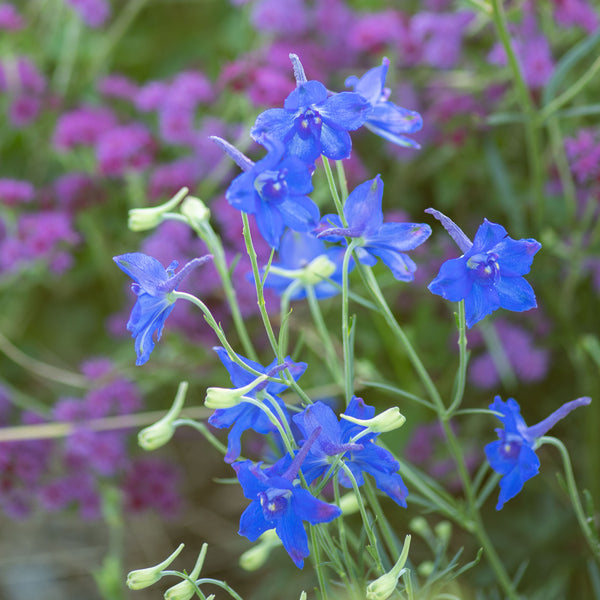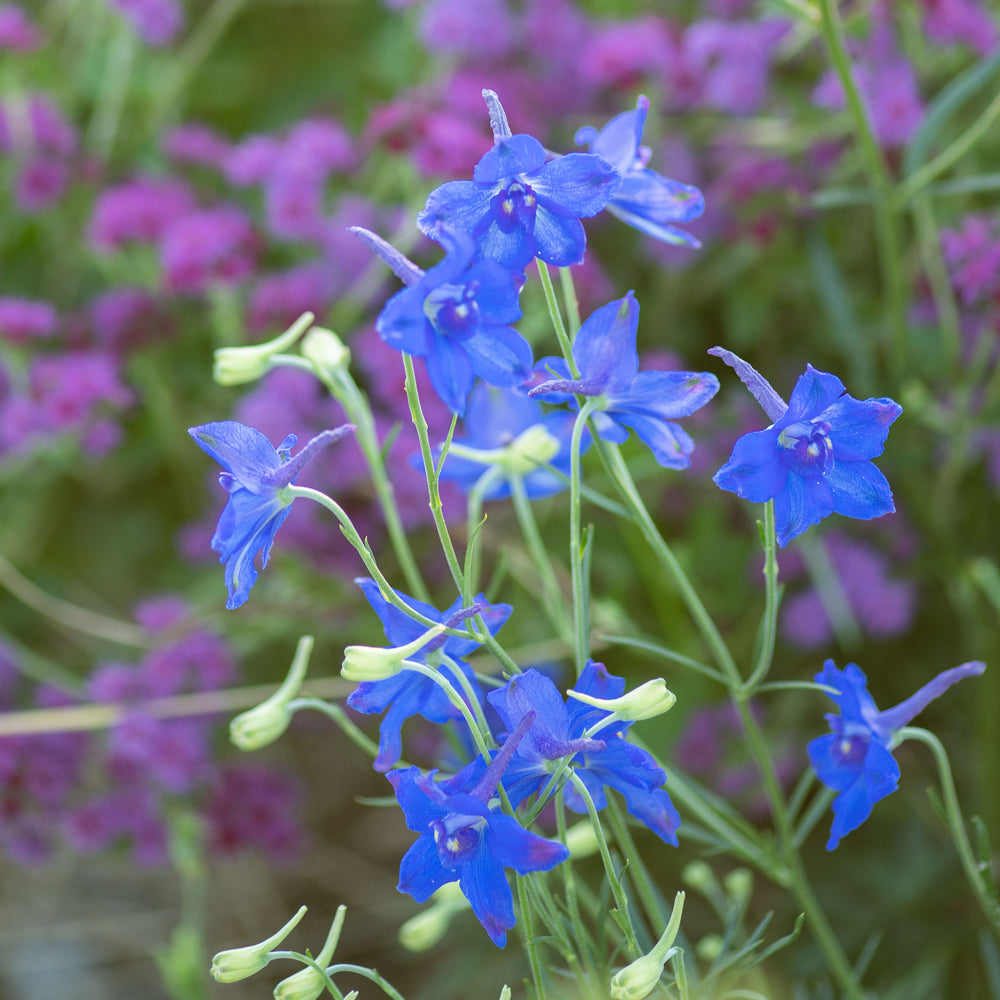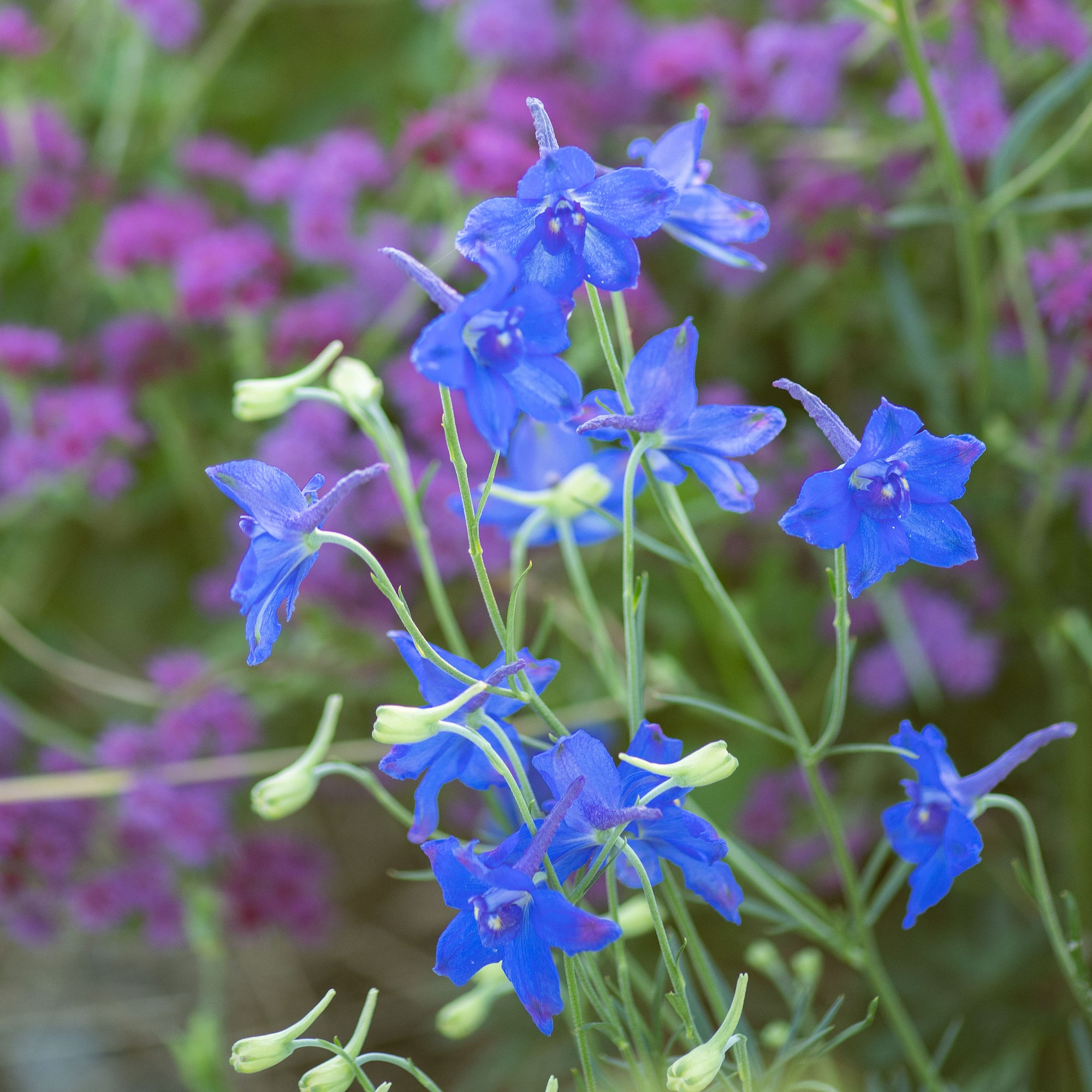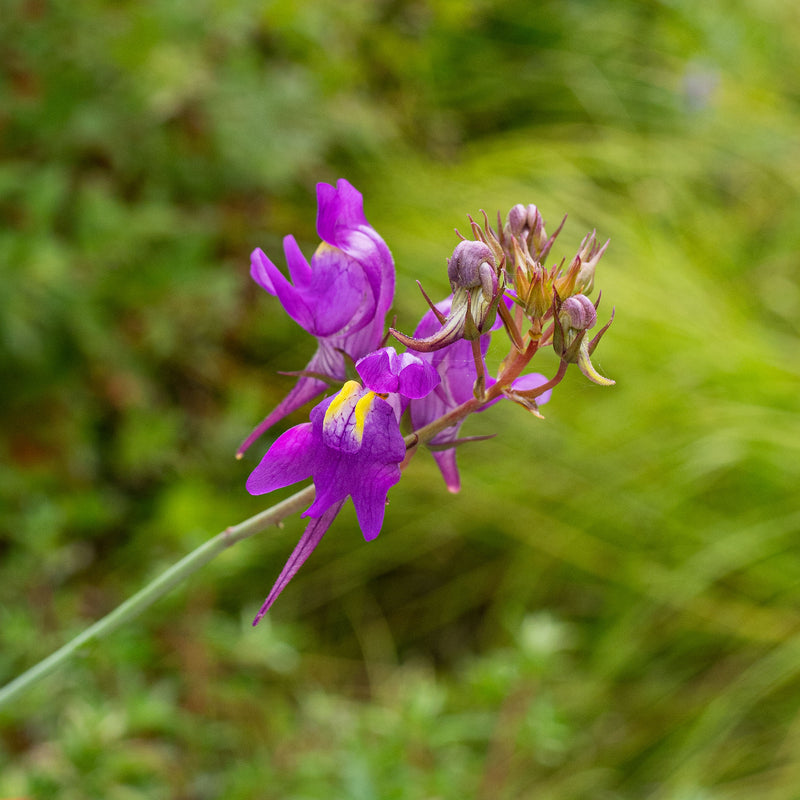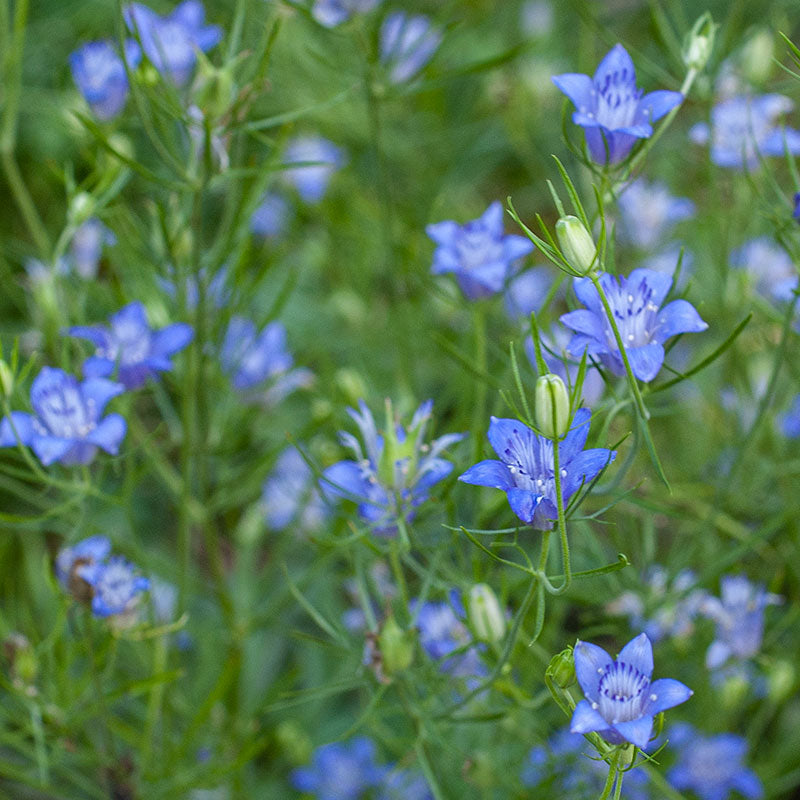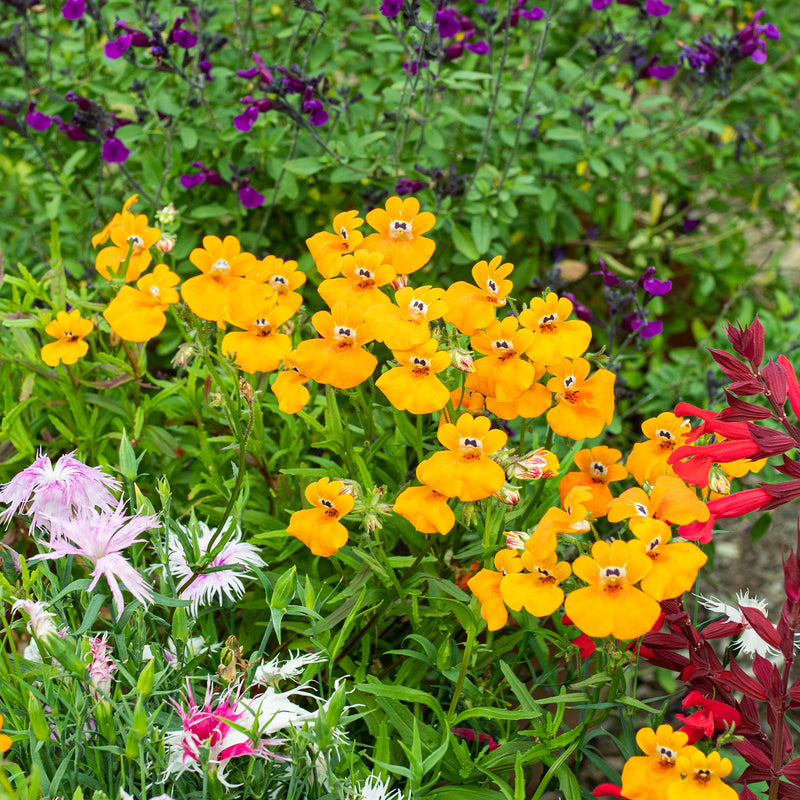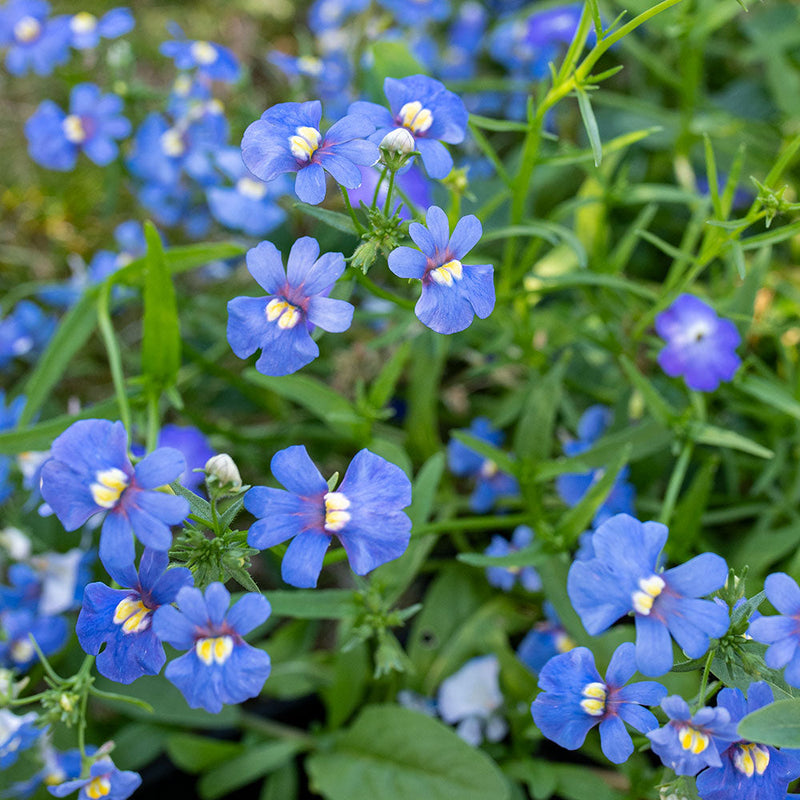SOWING INSTRUCTIONS
Depth:
1/8"; darkness needed for best germination.
Starting Indoors:
Recommended. Start 8-10 weeks before planting out. Sterile germinating mix with vermiculite is the preferred growing medium to prevent fungal problems. Keep at about 65-70°F.
Starting Outdoors:
Direct sow after frost to early summer.
WHEN TO SET OUTSIDE
In spring to early summer
PLACEMENT & CULTIVATION
A short-lived perennial often grown as an annual from an early sowing, Chinese delphinium or Siberian larkspur has a relaxed branching habit and large flowers scattered on the stems. More heat tolerant than the tall classic delphinium and easy to grow, deadhead and mulch in winter with evergreen boughs in zones 5 and below. Beautiful in containers and edging gardens in clouds of blue. Caution: all parts are toxic. Be aware of its poisonous qualities when siting in the garden.
Watering Details:
Do not allow soil to dry out. Water regularly, particularly during dry periods, but avoid saturated soils.
Soil pH:
Neutral to slightly alkaline; if soil is very acidic, add lime before planting.
Fertilizer:
Mix in 2-4" of compost prior to planting and fertilize with flower fertilizer midseason after the first flushof flowers. Top-dress existing plantings with a 1" layer of compost every spring.
Diseases & Pests:
Prevent fungal problems by planting in a location that has good air circulation and freely draining soil. If troubles arise, treat with organic fungicides. Scout for cyclamen mite infestation that causes blackened distorted buds and use miticides if damage is noted. Slugs can damage young plants severely-use non-toxic iron based slug bait around plants.
When to Cut for Bouquets:
Harvest when 1/2 of the florets are open.






























